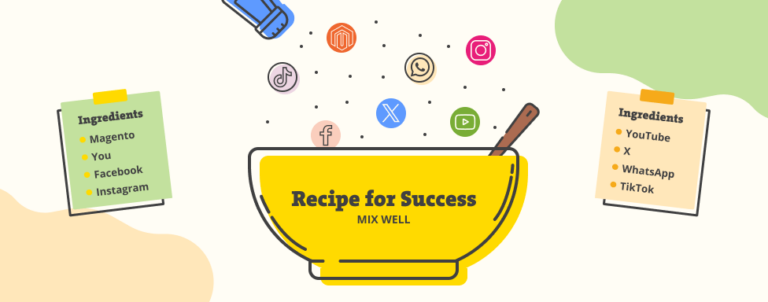As almost in every business, things in eCommerce tend to happen very fast. On a daily level, we need to analyze a lot of things, make a lot of decisions and decide on a bunch of models, approaches etc. Off course, some of those are small things which are a part of our daily routine. But some of those are rather big and tend to have a major effect on us, as well as on our company. I am talking about the projects which are the bread and butter of our business, and the focus of our work. More precisely, I am talking about our efforts to evaluate projects and decide whether to accept the project or not.
At any point, we have between a dozen and two dozen live projects in our company. Some are full web store build projects, some are operations which include support and further development, and some are smaller projects. It is pretty much the same situation like the one when you have a lot of kids. You love them all (most of the time) no matter the model/character or the age/size they are. But while with kids, you don’t get to choose, with projects the situation is a bit different.
Whenever a client approaches us with a specific project on his mind, we have to take into account quite a few details in order to be able to decide credibly whether a project is a fit for us or not. In other words, as the client is choosing an eCommerce agency, so is an agency (inchoo) choosing a client. It is not an easy task, to say the least, but it is the one that needs to be done. Some would automatically go and assume that the money is a major filter. It certainly is one of the filters, but it is not the major one, that’s for sure. So allow me to share a few thoughts which could potentially help when deciding to accept a project or not.
1. TIMELINES
Time is always a major factor in every project. A lot of times projects request for proposals are sent too late to meet some deadlines or projects are planned/expected to be delivered in an unrealistic time frame. Whether a client has some short and strict deadlines or we are in a tight spot time/resources wise, this component requires a careful discussion and planning to be solidly estimated and prospect further evaluated. If we talk about a project where the level of complexity is high and the deadlines short, we are talking about a high risk. The risk here is on both parties: For the client, the deadlines will not be met, maybe he will not be able to catch the shopping season etc. For us, there is a risk that some other projects will be delayed due to the overdue deadlines, and more importantly, we will have an unsatisfied client.
2. BUDGET
When talking about project budget the focus is not so much on the size of it, it is more on the fact what can be achieved with it. Requirements complexity and the shire magnitude of the project need to be taken into a consideration when discussing this part. A client needs to be aware that their overall budget will put the project in the certain direction. Budget and requirements need to go hand in hand. This dilemma is actually rather simple if something cannot be achieved with a certain budget than it is pretty much clear. We will always do our best to maximize client’s budget, in order to provide everything client needs, unfortunately, there are situations where we can not really do a lot. There is one important detail worth mentioning, and that is over budgeting! Usually, it makes no sense for the client to invest “all” the budget into the project and totally disregard the other costs that will come. Here we are talking about: maintenance, marketing, 3rd party services etc. Web store needs all of it, if we want it to be successful and grow.
3. TECHNOLOGY FIT
Technology factor is certainly one of the most important ones. Clients sometimes have the desire to build their web store on a particular platform/technology. The problem occurs when this platform/technology is not suitable for a particular project. This can certainly happen, given the number of different clients, industries and niches. It is very important to evaluate whether a particular project is feasible on specific technology and to what extent. Of course, almost anything can be coded from scratch, making the system work. But how well will it work, what budget will be spent and ultimately what will be upgradability and maintenance costs, that’s another story. In other words: You can teach a cat dog tricks but she will never catch a frisbee.
4. EXPECTATIONS
It is very important for both sides to have a good understanding of the project, its potentials, and its limitations. That is the only way to be able to have healthy expectations. But we need to address one other expectation aspect as well and that is a company to company relation. We all need to be aware of our roles, work that is done on each end, duties, and responsibilities. Only then we will be able to hold accountability and build a healthy relationship. Assumptions are the biggest mistakes that can ever happen because everything that was not said/asked and was assumed has a big chance of becoming a problem. If right at the beginning we realize we can not align the expectations on both ends, we need to reassess and try to put things on the right track. One thing that is a huge no-go is a promise we can not keep! Promising something that can not be done (time-wise, tech-wise, etc.) for the sake of getting a project is the worst thing you can do. Because in the end, nobody is going to like it: neither the client nor your developers. Every promise/guarantee you give and fail to keep will come back to haunt you.
5. FUTURE PERSPECTIVE
Perspective is an important factor because without healthy perspective it is difficult to even start a project. When considering this we like to take into a consideration client’s needs, client’s business model as well as client’s short-term and long-term plans. It is important to be able to align our view of the future together and work together in the same direction. That said, sometimes everything might seem perfect but if we do not share the vision it might be difficult to go from there. Certainly, there is a possibility for alignment if discussed openly and frankly, but if from the beginning two sides are miles apart it is highly unlikely that there will be a chance for a major twist.
6. COMMUNICATION
This is one of the details that can show you how your future business relation could look like. If your client or the agency (it goes both ways) manifests a problematic, delayed, prolonged communication in the early days of your relation, it might be a good indication of how your relationship may look like in the long run. This problem can have different reasons: The other side is a way too busy, maybe there are other bottlenecks, the person you are talking to has no authority or does not really understand the project etc. Also, there is a possibility that there is a major character mismatch between the main contact persons on both sides. You need to take all of this into consideration when evaluating your communication quality. If all of those are discussed directly as early as possible, there is a high chance that these obstacles can be resolved. That is the only way to prevent the problems from escalating further down the road.
As a conclusion
Surely there are other factors that are also important, but from my perspective, these are the ones that I find crucial. However, having everything perfectly in order especially in web development is everyone’s dream but it is utopia. So what we can do and what we always do, is try and to talk and discuss every open subject with our clients initially to make sure we are on the same page. It is close to impossible to have all of the above point perfectly aligned, but having a healthy balance is a must. In order to achieve that and finally accept the project, try and apply the proven formula: A lot of open communication and thorough analysis, combined with a lot of understanding and tolerance!



